19 Proven Employee Incentive Programs To Elevate Your Workforce
In today's fiercely competitive business world, retaining and recruiting top talent is more challenging than ever before. However, organizations that invest in employee incentive programs create a distinct competitive edge. It empowers businesses not only to survive but also to thrive.
Thoughtfully designed incentives can be a game-changer for your employees and the organization. Start by understanding your employees' needs and preferences through surveys or discussions. Tailor incentives that align with their values.
In this blog, we will explore various incentive programs and how they can be used to motivate your workforce. Additionally, we will discuss how you can choose, implement, and measure the success of incentive programs tailored to your organization.
Key Takeaways
- Understanding the Concept of Employee Incentive Program
- Benefits of Employee Incentive Programs in the Workplace
- Learning about the Types of Employee Incentive Programs
- 19 Employee Incentive Programs to Improve Employee Engagement
- How to Choose the Right Employee Incentive Program for Your Company
What are Employee Incentive Programs?

According to an SHRM survey, 79% of organizations use some form of monetary incentives, and 84% use non-monetary incentives and rewards.
An employee incentive program rewards employees for achieving company performance goals. These programs offer tangible incentives such as bonuses and stock options, along with intangible incentives like employee recognition and flexible work hours that go beyond the regular paycheck.
It helps you boost employee morale and drive employee engagement by offering employees an opportunity to be rewarded for their hard work. It is a key factor in the success of any business.
Benefits of Employee Incentive Programs
-
Increases Employee Satisfaction: Employee incentive programs boost employee satisfaction by recognizing and rewarding their contributions. It adds meaning to their work and something that they can look forward to.
-
Boosts Employee Productivity: The promise of an incentive, whether it's in tangible or intangible form, can inspire employees to work harder and use their time productively.
-
Increase in Employee Engagement: The prospect of earning rewards or recognition is a powerful motivator, driving employees to perform their best.
-
Creates Employee Well-being: Employee incentive programs that include flexible work arrangements or wellness initiatives contribute to a culture that values employee well-being.
-
Increases Employee Retention: When employees feel recognized and rewarded, they are less likely to seek opportunities elsewhere. This leads to an increase in employee retention and less employee turnover.
Types of Employee Incentive Programs
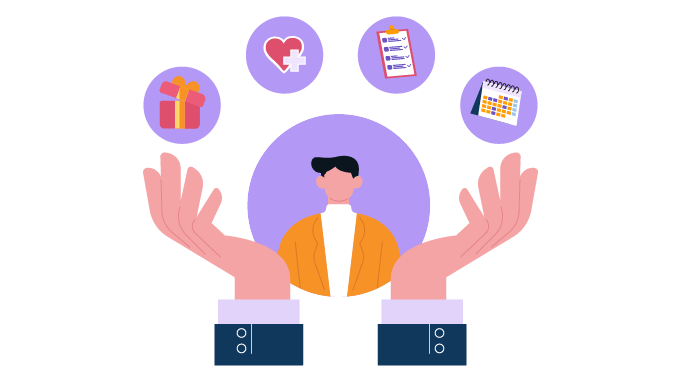
Financial Incentives
According to a study, organizations that provide financial incentives to employees reported better levels of job satisfaction than those that did not.
A financial incentive is a company's monetary reward to motivate its employees. Organizations implement financial incentive programs to enhance employee performance and foster loyalty.
Examples of financial incentives are bonuses, profit sharing, increments, and stock options.
Non-financial Incentives
Non-financial incentives are rewards and benefits that do not involve direct monetary compensation. These incentives focus on improving work-life balance and nurturing personal and professional growth.
For instance, publicly acknowledging and recognizing employee's exceptional performance is a form of non-financial incentive that helps boost their sense of achievement.
Individual Incentives
Individual incentives focus on motivating and rewarding individual employees based on their performance and achievements in the organization. It recognizes the exceptional efforts and accomplishments of individual employees.
For instance, when employees meet certain goals and perform exceptionally, they are rewarded with spot awards or benefits like performance bonuses or promotions.
Team Incentives
Team incentives are rewards and benefits provided to a group of workers as a collective recognition for their joint effort. It is mainly designed to encourage teamwork and collaboration in an organization.
For example, a project team that completes a complex project on time may receive a team performance award or a monetary reward.
Short-term Incentives
Short-term incentives are designed to reward employees for a short period of time. Its intent is to drive performance and boost morale within a brief period, often quarterly or annually.
Some short-term incentives include annual cash bonuses, an extra day off, or overtime pay.
Long-term Incentives
Long-term incentives are designed to reward and motivate employees for their commitment, contributions, and achievements over an extended period.
Stock options or share plans are examples of long-term incentives where an employee has to wait for a longer period of time to avail the benefits fully.
19 Employee Incentive Programs Based on Key Objectives
Productivity Incentives
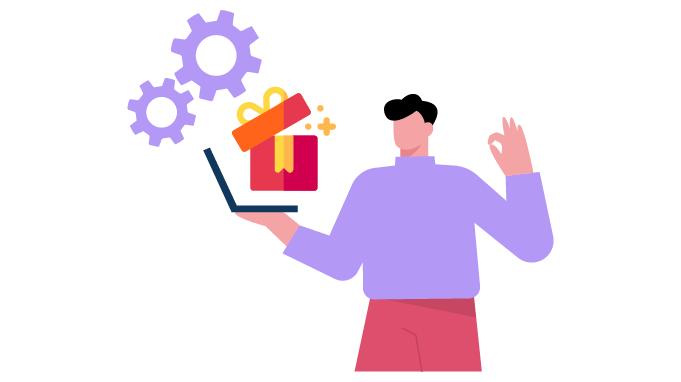
Productivity incentives are given to employees to encourage and increase their efficiency and overall organizational performance. This type of incentive is typically tied to achieving specific targets, goals, or milestones.
1. Performance Bonuses
Performance bonuses are financial rewards given to employees for achieving specific goals, targets, or milestones. It is a powerful incentive to motivate employees to excel in their roles.
You can use annual or quarterly performance bonuses to monitor and incentivize employee performance. It gives employees a defined time period to work towards their goals and demonstrate their capabilities.
2. Profit Sharing
Profit-sharing programs can be a persuasive tool to incentivize employees as they create a sense of shared ownership and foster a culture of transparency.
When employees believe that their hard work directly impacts the company's profitability, they are more committed to the company's objectives.
Some of the profit-sharing plans include:
-
Cash Bonus Plans: Under this plan, a portion of the company's profits are distributed to employees as cash bonuses.
-
401(k) Profit Sharing Plans: Employers contribute to their employees' 401(k) retirement accounts based on the company's profits.
3. Task Management Tools
Incentivizing employees using Task management tools can be a powerful way to boost productivity. It can help your employees and teams plan, organize, and track their progress in real-time.
It offers a centralized hub for assigning, prioritizing, and monitoring tasks, allowing for better time management and collaboration.
In the world of task management tools, there are many options to choose from, each with its unique strengths. A few of them include Microsoft To Do, Trello, and Todoist.
4. Gamified Productivity Challenges
Incentivizing employees with gamified productivity challenges can add an element of competition, making work more engaging and exciting.
Gamification enhances employee engagement by making tasks more enjoyable. Incorporating gamification elements like leaderboards, badges, and points can further add a bit of fun and competition in the workplace.
A few examples of gamified challenges that you can implement in your organization are Team Building Escape Room, Scavenger Hunt Challenge, and innovative idea contest. This will test their understanding, collaborative effort, and out-of-the-box thinking.
5. Time-Off Rewards
Time-off rewards allow employees to take paid time off beyond their standard time-off entitlements. It is designed to improve work-life balance and enhance overall job satisfaction.
You can offer a range of time-off rewards options, allowing employees to select their needs. This could include additional vacation days, paid sabbaticals, or flexible time-off policies.
Engagement Incentives
1. Peer Recognition Programs
Peer recognition programs empower employees to appreciate their peers and acknowledge each other's contributions and accomplishments. It fosters peer-to-peer recognition and reinforces positive company culture in the workplace.
If you want to encourage your employees to appreciate each other, utilizing a recognition platform can be beneficial.
Platforms like Vantage Rewards can help your employees recognize each other’s efforts through public shout-outs, unique badges portraying their contributions, or tangible rewards in the form of redeemable points.
Source: Vantage Rewards
2. Professional Development Opportunities
Professional Development Opportunities allow employees to expand their skills and achieve their career aspirations. It makes them more committed, engaged, and enthusiastic about their roles.
As an employer, you can invest in the professional growth of your employees by providing access to workshops, courses, and mentorship programs. It demonstrates a commitment to their growth and leads to a more satisfied and motivated workforce.
3. Flexible Work Arrangements
Flexible work arrangements, like remote work or flexible hours, can be a powerful engagement incentive for the workforce. These arrangements often lead to increased job satisfaction and greater employee engagement.
When employees feel that their employer cares about their work-life balance and personal growth, it creates a positive work environment. Doing so helps you retain employees while keeping them committed to their job responsibilities.
4. Wellness Programs
The easiest way to incorporate healthier lifestyles in your workforce is to adopt effective wellness programs designed to enhance both physical and mental well-being of your employees.
Corporate wellness apps like Vantage Fit can help you incentivize your employees to stay active with the help of various fitness challenges like weekly step challenges and walkathons.
The best part is that employees can earn redeemable points if they complete any task. This gives them the encouragement to involve themselves in wellness initiatives.
Retention Incentives
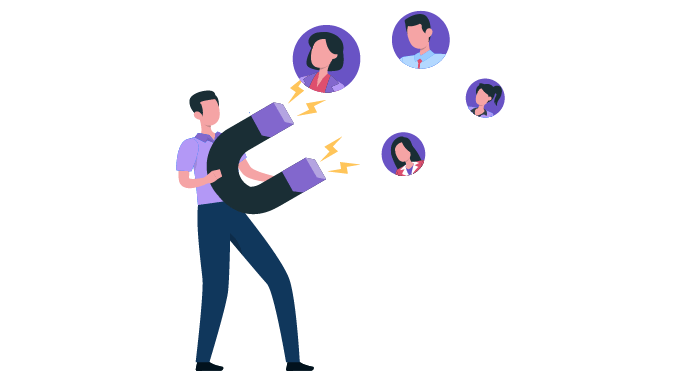
1. Long-Term Benefits Package
A long-term benefits package is a set of incentives an employer provides employees over an extended period. It is typically designed to attract and retain employees.
Long-term benefits packages provide employees with financial security and support their long-term goals. It includes health insurance, stock options, or equity grants.
2. Loyalty Bonuses
Loyalty bonuses are financial incentives employers offer to recognize and encourage long-term commitment and dedication from their employees.
It is typically awarded to employees who have remained with the company for an extended period of time.
3. Regular Performance Reviews
Regular performance reviews are how employers assess and provide feedback to their employees regarding their job performance. These reviews typically occur annually or quarterly.
Some organizations tie compensation to regular performance reviews or performance appraisals, such as salary increases, bonuses, or promotions.
Knowing that their performance directly impacts their income can strongly motivate employees to strive for excellence.
4. Retirement Planning Assistance
Retirement planning assistance refers to the support and resources provided to help employees prepare for their retirement. It is offered to ensure that the employees can maintain a comfortable quality of life after retirement.
Employers can educate employees on retirement planning through seminars, workshops, and online resources. It could cover various aspects of retirement planning, such as savings, investments, and tax strategies.
5. Referral Bonuses
An employer offers a referral bonus to encourage their employees to refer eligible candidates for job openings within the organization. It leverages employees' professional networks and contacts to attract talent.
Employers can offer monetary or non-monetary rewards to employees for referring candidates who get appointed and remain in the organization for a specified period.
Motivation Incentives
1. Cultural Celebrations
Celebrating diversity and cultural traditions can strengthen your workforce's sense of belonging and loyalty. It can create a positive, inclusive work environment that incentivizes and engages employees.
Employers can celebrate multiple cultures to make all employees feel valued and included. This can include major holidays like Diwali, Christmas, Eid, Lunar New Year, and more.
2. Pet-Friendly Policies
Implementing pet-friendly policies in the workplace can improve employee well-being by providing emotional support and companionship. It can be beneficial in a stressful work environment.
Employers can allow employees to bring their pets to work on designated days, such as "Pet Fridays" or once a week. You can also offer pet wellness items, such as toys, waste bags, food, and water bowls, to pet owners as gifts.
Moreover, to make them feel like a part of the organization, you can offer pet insurance that will benefit them.
3. Childcare Services
Offering childcare services is a strong incentive for retaining employees, especially working parents. It can make the company more attractive and reduce the employee turnover rate.
Furthermore, it can help organizations attract a diverse workforce by removing barriers that might otherwise prevent parents from maintaining their careers.
Companies can provide childcare services by including on-site daycare facilities or crèche. It can also accommodate flexible work policies that allow parents to balance their work and childcare responsibilities.
4. Travel Incentives
Travel incentives are a great way to recognize and appreciate the hard work and dedication of your employees. In some cases, travel incentives can involve group trips or team-building experiences.
Examples of travel incentives may include all-expenses-paid trips, travel vouchers, vacation packages, or other travel-related benefits.
5. Employee Assistance Programs
Employee Assistance Programs (EAPs) are counseling and consulting programs designed to help employees address issues that impact their job performance.
EAPs are designed to support individuals in managing stress and personal challenges proactively. It offers employees a confidential and safe space to discuss personal and work-related issues with trained professionals.
Designing and Measuring the Success of Employee Incentive Programs
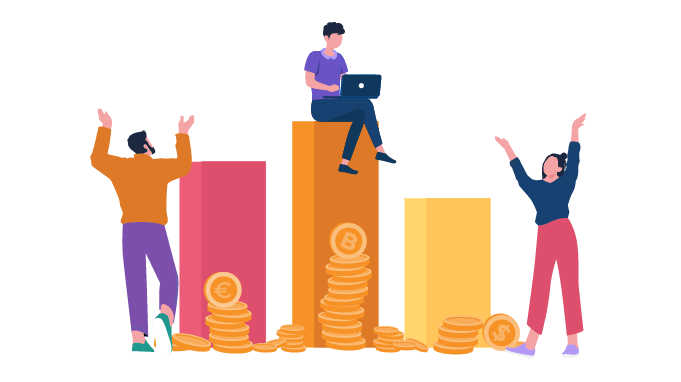
Setting Clear Goals and Objectives
In any successful employee incentive program, clarity of purpose is paramount. Start by defining what you want to achieve with the program. Once your objectives are crystal clear, you can tailor your incentive program to align with these goals.
For instance, if your goal is to improve productivity, use performance-based incentives like spot bonuses to reward employees who meet those targets.
When goals are well-defined, employees are more likely to understand what is expected of them, thus making it easier to measure the program's success.
Choosing the Right Type of Incentive Program
The key to choosing the right type of incentive program for your company depends on the type of organizational culture that your company has. You also need to consider the preferences and motivations of your employees.
Only by understanding your workforce and their needs you can choose the right incentive program that resonates with them.
Ensuring Fairness and Equity
Fairness and equity in the incentive program are crucial for maintaining transparency.
Fairness means that the rules and criteria for earning rewards are clear and unbiased. At the same time, with equity, employees have a fair chance to engage and thrive within the program.
You can bring fairness and equity to incentive programs by ensuring that all employees have transparent and equal reward structures and assessment methods.
Communicating the Program
The first step to incentivize your employees is to make them understand the program's details, how they can participate, and what they need to do to earn rewards.
The cornerstone of a thriving employee incentive program lies in effective communication. And that can be achieved by using multiple communication channels, such as newsletters, town hall meetings, and email updates.
You can further encourage questions and provide clarification to minimize misunderstandings. An informed workforce is more likely to engage with the program and strive for its success.
Tracking and Evaluating Performance Metrics
You can assess the effectiveness of your incentive program by employing Key Performance Indicators (KPIs) to monitor and track its performance metrics. However, you need to regularly analyze these metrics to understand the program's impact.
If you observe positive changes, such as an increase in employee engagement, it indicates that your program is likely working effectively. But, if the results don't meet your expectations, you may need to adjust the program to suit the workforce better.
Conducting Employee Surveys
Conducting regular employee surveys are essential in garnering feedback to improve employee incentive program. These surveys can help you gauge the pulse of the program and its impact on employee engagement, job satisfaction, and employee morale.
Employers can analyze the survey data to identify areas for improvement and tackle any challenges that might emerge.
Benchmarking Against Industry Standards
To determine whether your incentive program is genuinely successful, it's essential to benchmark it against industry standards and best practices. This will help you identify areas where you can enhance your strategy.
You can do that by regularly researching and analyzing industry data and staying up-to-date with the latest trends.
Choose the Right Employee Incentive Program for Your Company

Consider Your Company Culture and Values
While choosing the right employee incentive program for your company, you need to look at your company's culture and values. The incentive program should resonate with your company's culture.
For example, if your company values innovation and creativity, consider offering incentives for innovative ideas or projects.
Programs that align with your culture are more likely to impact your employees long-term.
Consider Your Budget
When choosing an effective employee incentive program, you must choose a sustainable incentive program that doesn't strain your finances.
You need to allocate your budget based on what will have the most significant impact. Sometimes, smaller, more frequent rewards can be more effective than large annual bonuses.
Furthermore, you can also include non-monetary rewards like work-from-home options, flexible work arrangements, or personalized development plans in your incentive program.
Consider Your Employees' Needs and Wants
Your employees' input is invaluable when designing an incentive program. Conduct surveys or interviews to understand what motivates your employees.
Are they seeking financial incentives, career development opportunities, or work-life balance benefits? You can tailor your program accordingly to accommodate their needs and wants.
Recommended Resource: Top 20 Examples of Employee Incentive Programs
Employee Incentive Programs for Specific Industries
Employee Incentive Programs for Healthcare Industry

The healthcare industry is one of the most demanding and crucial sectors, where the performance of employees significantly impacts hospital patient outcomes.
Let's look at some of the types of incentive programs that you can implement to maintain and retain skilled professionals in the healthcare industry:
-
You can offer financial incentives such as performance-based bonuses or profit-sharing to encourage healthcare professionals to excel in their roles.
-
Implement a recognition system where exceptional employees are acknowledged and rewarded for their outstanding work. It includes "Employee of the Month" awards or certificates of excellence.
-
Offer learning opportunities to healthcare professionals that help them acquire new skills to enhance their contributions to patient care.
Employee Incentive Programs for the Education Industry

The education sector is pivotal in shaping the future of our society. Consequently, to attract and retain passionate educators, one must implement employee incentive programs.
Here are a few employee incentive programs that you can implement for the Education industry:
-
Support teachers with opportunities for professional development, such as funding for graduate courses, workshops, or attending educational conferences.
-
Reward educators based on student performance, classroom management, or other key performance indicators.
-
You can further offer incentives like additional paid leave or monetary rewards to acknowledge their contributions.
Employee Incentive Programs for Tech Industry
In the tech industry, innovation and competition are of utmost importance. The success of any tech company hinges on the talents and dedication of its workforce.
To harness the full potential of tech professionals, use the following employee incentive programs to maintain employee motivation and engagement:
-
Offering stock options or equity grants can align employees' interests with the company's success.
-
Tech professionals value flexibility. Provide options for remote work, flexible working hours, hybrid work, or compressed workweeks to help employees achieve a better work-life balance.
-
Organize regular hackathons or innovation challenges to foster creativity and teamwork. These events can encourage innovation in the organization.
Latest Trends in Employee Incentive Programs
Use of Technology in Employee Incentive Programs
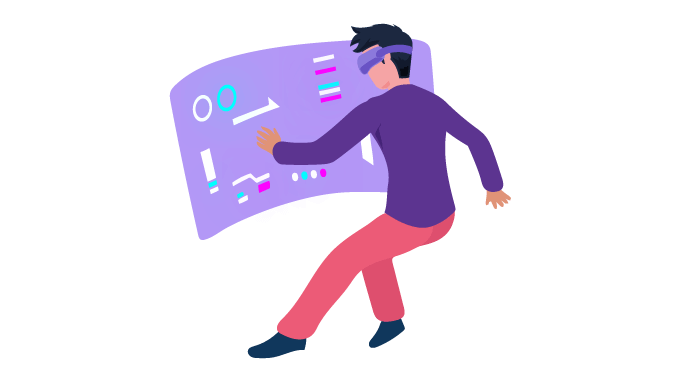
Technology is undeniably a game-changer when it comes to reshaping the way companies acknowledge and reward their employees. You can gain invaluable insights into employee performance and preferences with data analytics.
Furthermore, technology empowers you to personalize incentives based on employee preferences and achievements. It creates a user-friendly platform where employees can choose rewards that resonate with them.
Real-time recognition and rewards are another compelling aspect of technology's impact on employee incentive programs. With its help, companies can implement systems that celebrate accomplishments as they happen.
Use of Gamification in Employee Incentive Programs

A Gartner report shows that gamification has now been adopted by more than 70% of businesses belonging to the Global 2000 list of companies.
In recent years, the strategic implementation of gamification has been gaining momentum across various industries. Gamification can turn your incentive program into an engaging and exciting employee journey.
By incorporating gamified elements like leaderboards, points, and badges in the workplace, you can help employees track their progress and make work fun.
For instance, you could issue badges for completing training modules, hitting sales targets, or consistently demonstrating teamwork. It can help you drive productivity and elevate employee satisfaction.
Use of Personalized Employee Incentive Programs
One of the most influential strategies to elevate the impact of employee incentive programs is personalization. Understanding individual employee goals and aspirations is the first step to personalization.
Conducting one-on-one meetings to grasp what drives each employee and what they aim to achieve in their careers is instrumental. Once you have these insights, the next step is to tailor incentives that align with their unique ambitions.
For instance, one employee might prefer extra paid time off, while another may value cash bonuses. When this happens, you can create a choice of incentives, allowing employees to choose rewards that resonate with them.
Conclusion
In a world where talent is the most valuable resource, employee incentive programs are a powerful tool to elevate your team and drive your organization toward success.
By implementing well-designed employee incentive programs, you can boost job satisfaction, enhance productivity, and improve employee retention. Consider your company's culture, budget, and employees' needs while choosing the right incentive program. So, gear up and start implementing your employee incentive programs today!

















